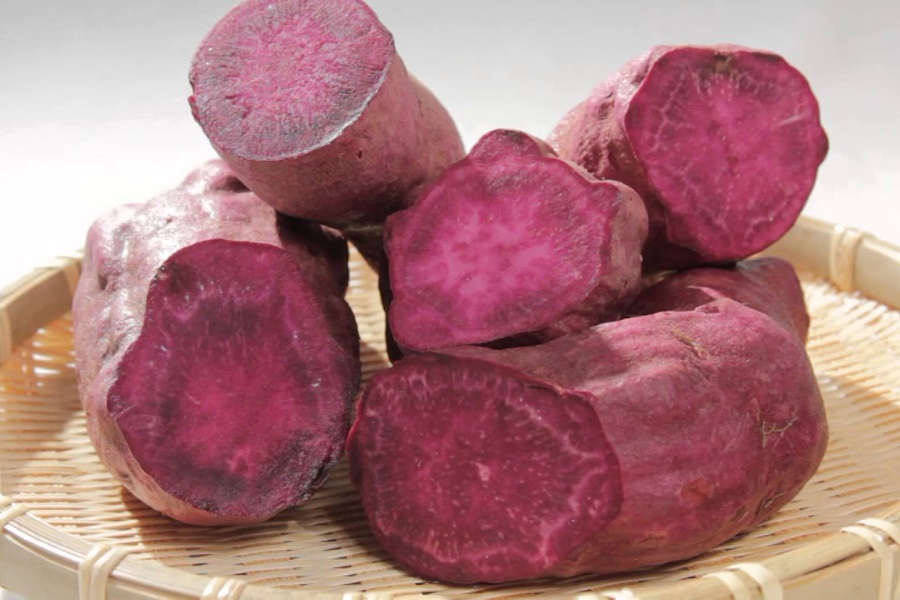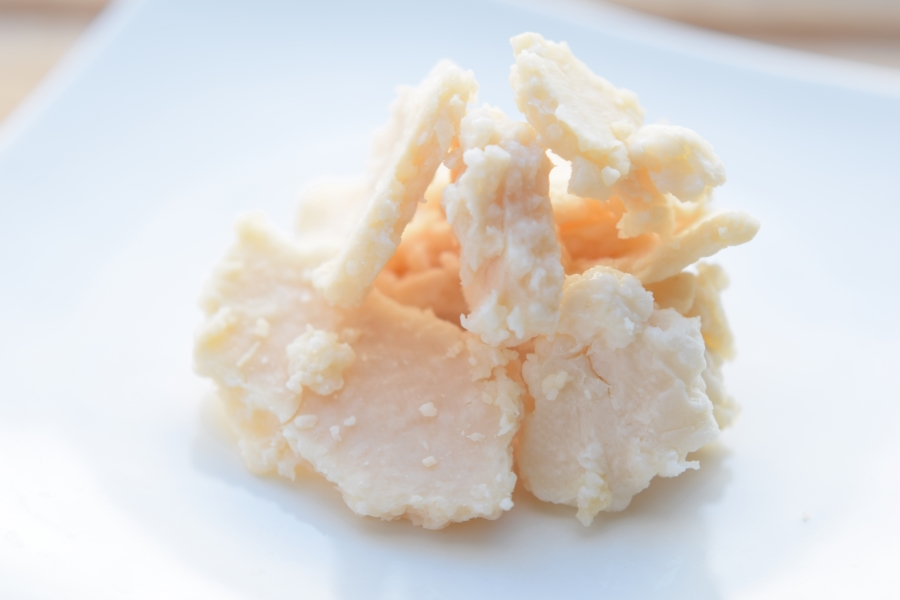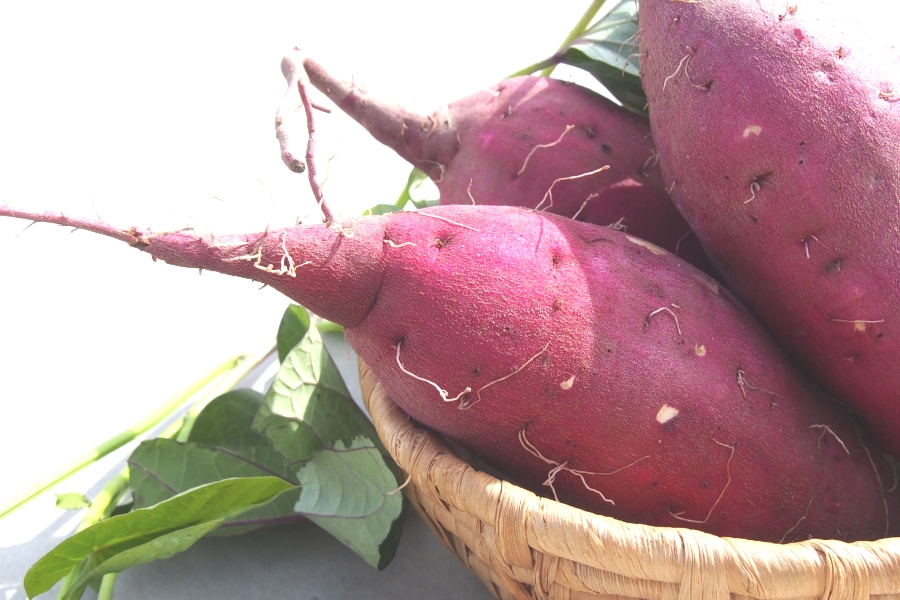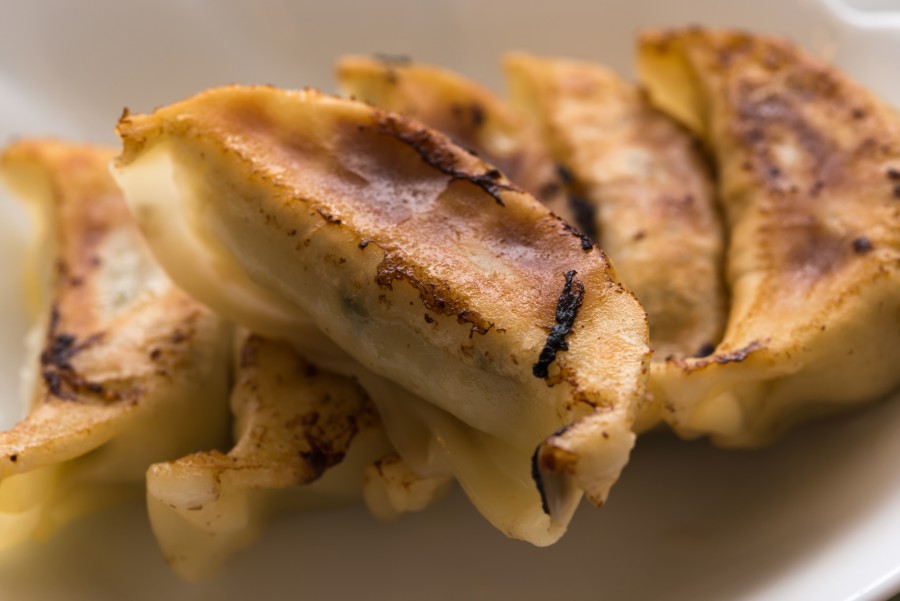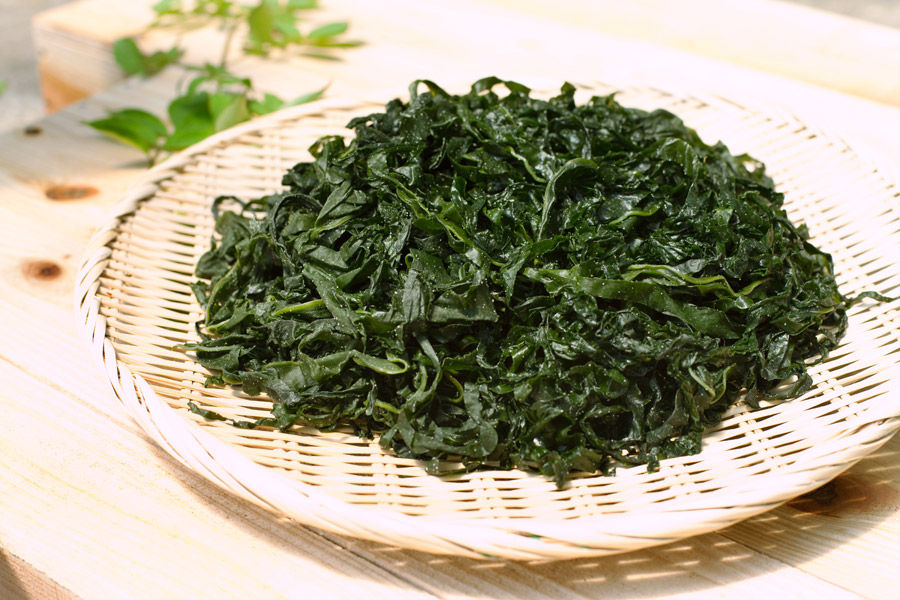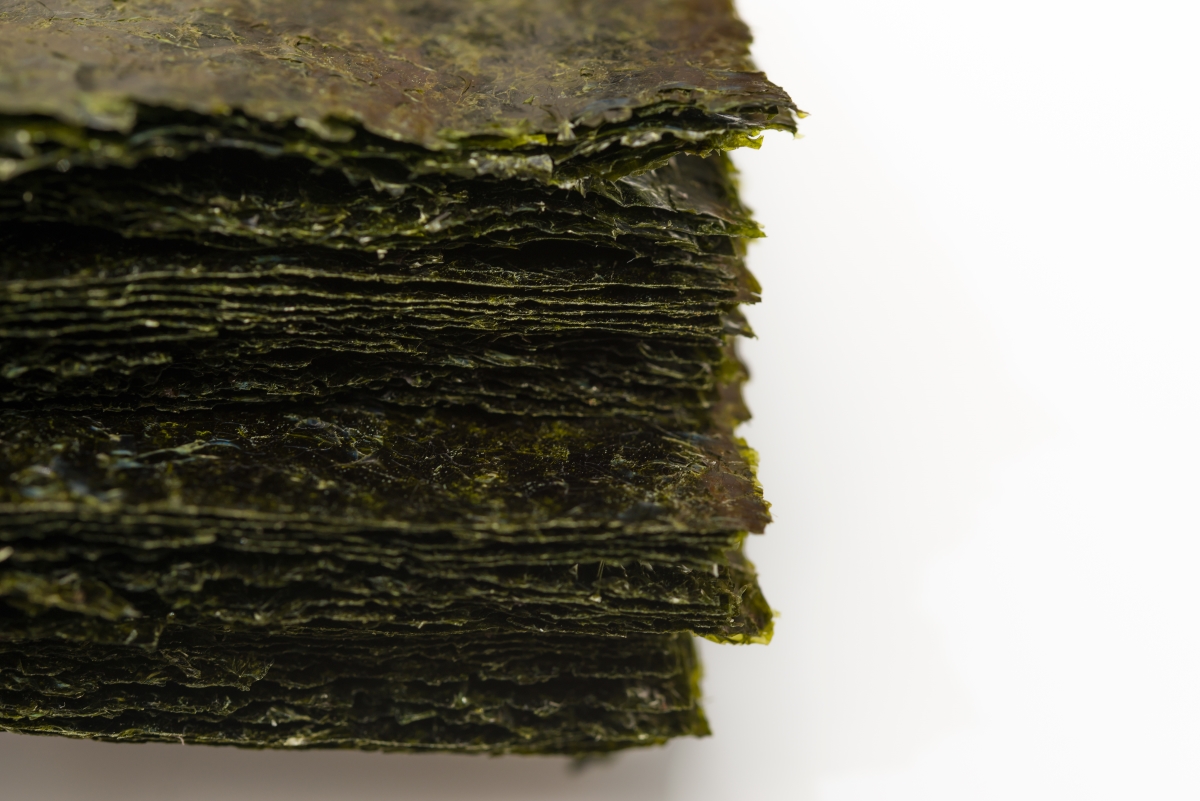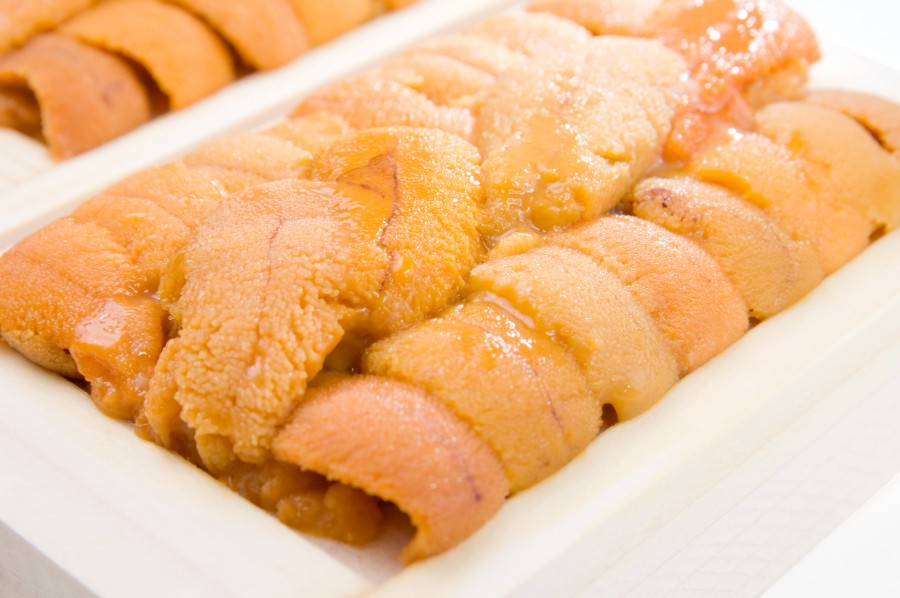A New Breed of Murasaki-imo Everyone Is Talking About: “Purple Sweet Road” At Nijiya, you find satsuma-imo shipped directly from Nijiya Farm. As you cut into the deliciously purple skin of this satsuma-imo, you find that the meat is also a beautiful purple color. The vivid purple color is due to B carotene and anthocyanin pigment, which is a type of polyphenol. It sounds good for the body, doesn’t it? Called “Purple Sweet Road,” this particular murasaki-imo (meaning “purple potato” in Japanese) is a new breed of potato registered in 2006. A cross between Naruto-kintoki and murasaki-imo, Purple Sweet Road combines the taste of Kintoki and the nutritional value ofmurasaki-imo. The pretty purple color is one secret of the popularity […]
There are many different types of eggs: There are white-shelled eggs, brown-shelled ones, those with rich, golden yolks or pale-yellow yolks, etc. These differences have nothing to do with their nutritional value. The nutritional value of an egg is determined by the type of feed the hen eats. We recommend eating one or two organic or free-range eggs every day. Contents: Eggs are a healthy food source that offer excellent nutrition Nijiya’s Eggs Japanese Style Egg Recipes Eggs are a healthy food source that offer excellent nutrition Many people believe that brown eggs with deep golden-colored yolks are better in quality and thus higher priced. However, the eggshell and yolk color have nothing to do with their nutritional value. The […]
Sakekasu is made from steamed rice and kome-koji (rice malt). During the fermentation process that produces sake, the solids, or lees, that remain after the liquid is captured is called sakekasu. Contents: What is Sakekasu? Sakekasu Recipe What is Sakekasu? Sakekasu has health as well as cosmetic applications. It contains protein, carbohydrates, dietary fiber, vitamins, organic acids, and minerals. It also provides folic acid and amino acid peptides, Aspergillus, and yeast-derived β-glucan. Sakekasu may also prevent osteoporosis and constipation and may lower bad cholesterol levels. Since it is said to fight against modern disease, sakekasu is a food that we want to eat routinely. It also has benefits as a skin moisturizer and is widely used as a raw material […]
Matsutake is a wild seasonal mushroom having an intense aroma, distinctive texture and natural flavor. Matsutake, grows in relatively dry soil containing few nutrients. It is found in the autumn in single-tree forests of Japanese red pine, Yezo spruce (Picea jezoensis), etc., or in mixed forests of primarily needle-leaved trees. Contents: What are Matsutake Mushrooms? How to prepare Matsutake Musrooms? Let’s taste Matsutake Mushroom simply and originally! How to cook Matsutake Mushrooms? What are Matsutake Mushrooms? The relationship between the Japanese people and mushrooms has a long history. Many pieces of mushroom-shaped earthenware have been found in ruins of the Middle Jomon Period (3500-1500 B.C.E.). The Japanese classic Manyoshu poetry anthology contains tanka (thirty-one syllable poems) featuring the matsutake mushrooms […]
Kabocha can be harvested twice a year, in the spring and fall, but the latter is its peak season. Harvested kabocha can be stored for a period of over a month to enhance its sweetness. Those harvested during the peak season undoubtedly taste better. Contents: A Flavor of the Earth Would you like some delicious Kabocha? How to cook Kabocha (Japanese pumpkin recipes) A Flavor of the Earth Did you know there was once a custom in Japan based on the saying that “eating kabocha with shiruko (sweet soup made from azuki beans) on the winter solstice will prevent common colds?” Not many people would know about such a thing these days. Around the winter solstice – the time of […]
The sweet potato (satsuma-imo) is native to Mexico and the surrounding tropical American region. Diploid Ipomoea trifida, which belongs to the family Convolvulaceae, has been identified as a wild ancestor of the sweet potato. Today’s sweet potatoes are believed to have been developed through artificial selection as a result of mutation and cross breeding with wild species. Whether artificial or spontaneous, a great number of sweet potato species have been created throughout the long history of its cultivation. Different regions grow varieties befitting their geographical needs. In fact, sweet potatoes are grown in most of the tropical, subtropical and temperate zones around the glove today. For that reason the sweet potato comprises an astonishing array of varieties, with new types […]
Eggplant, a tropical plant, is said to have originated in eastern India. A long time ago the plant was brought into southeastern Asia, but there is no record to indicate exactly when that was. In Japan, eggplant is believed to have a 1,200-year history and used to be called “nasubi.” Today there are numerous eggplant varieties throughout the world. In Japan alone, there are various names or shapes of eggplants that are of local origins. For example, “Kamonasu” is the famous, smaller-sized, round eggplant originated in Kyoto. Contents: Why is fall eggplant so delicious? “Organic Eggplant” How to Cook Nasu? (Eggplant Recipes) Why is fall eggplant so delicious? Why is fall eggplant so delicious? Eggplant is generally considered to be […]
Molokhia is a vegetable that has been widely eaten in Egypt and India, among other regions, since ancient times. Molokhia means “vegetable of kings” in Arabic. It’s believed to have been given that name because it’s so nutritious that it even cured the diseases of the kings. Contents: Molokhia -Sticky, Slippery Power of the Summer Molokhia (Jew’s Mallow): A Summer Vegetable Pursuing a Molokhia Growing Opportunity in Southern California Growth of Molokhia Artificial Light Culture Nutritive Value of Molokhia How to cook Molokhia? (Molkhia Recipes) Molokhia -Sticky, Slippery Power of the Summer True to its legacy of sustaining the health of kings, molokhia offers a great variety of outstanding nutrients such as vitamin B1, vitamin B2, vitamin B12, vitamin C, […]
How Bean Sprouts are Made Bean sprouts have been prized since ancient times, not only in Japan but also in China, Korea and Southeast Asia, as a remarkable food that helps build the body. Now that bean sprouts can be mass-produced in factories, they’re back in the spotlight as a hygienic, safe sprout vegetable. They can be produced with great flavor and abundant nutrition regardless of the season, and are grown using only fresh water with no chemical fertilizers or pesticides. Nutritional Value of Moyashi Bean sprouts are an extremely healthy food bursting with a variety of nutrients. As bean sprouts grow, latent nutrients, such as the starch, fat and protein stored in its seed, are hydrolyzed, releasing energy while […]
Winter brings a variety of delicious leafy vegetables, which make nutritious additions to pots. Leafy vegetables, with their vivid green color, make us feel healthy just by looking at them. Among all the leafy vegetables, mitsuba is the one we’ll feature here. Mitsuba warms the body and suppresses coughs due to illness. When you start to feel ill, we recommend making a hot drink with mitsuba, ginger, and Tokyo-negi mixed with hot water. Contents: Mitsuba -Aromatic herb of Winter- How to cook Mitsuba? (Mitsuba Recipes) Mitsuba -Aromatic herb of Winter- Mitsuba, which means “three leaves,” was named after the shape of its leaf, which is divided into three parts. Its leaf and stem are edible. Mitsuba is a perennial umbellifer […]
When it comes to enjoying fall flavors, mushrooms are an obvious choice. Although there are many varieties of edible mushrooms, generally they can be divided into saprobic fungi and mycorrhizal fungi. Saprobic fungi include wood-rotting fungi, which grow out of the trunks of living trees. Most of the mushrooms that can be cultivated are saprobic fungi; they break down fertilizers and the trees on which they feed. Wood-rotting fungi include shiitake, maitake, nameko, enokidake, buna-shimeji, hiratake, and eringi. White mushrooms and Agaricus do not grow out of trees but are still considered saprobic fungi. Contents: Matsutake Mushrooms Kinkatsu (A healthy life with microorganisms) How to cook Kinoko? (Mushroom Recipes) Matsutake Mushrooms “Matsutake” is definitely the king of mushrooms. It is […]
Contents: Recommending vinegar consumption Vinegar TRIVIA (Is vinegar good for you?) How to use Japanese Vinegar? Recommending vinegar consumption During the summer months, it seems that many people complain of fatigue, using up more stamina than usual, and feeling out of sorts with no cause. This is said to be due to our bodies’ becoming acidic because of changes in modern eating habits. It is known that the body’s natural healing power is strongest when the body maintains a slightly alkaline state. In other words, those whose physical constitution is slightly alkaline are less vulnerable to fatigue, disease and/or injury because of an enhanced natural healing power. Conversely, those whose bodies are acidic have their natural healing power compromised, becoming […]
What is Miso Soup? Traditionally many fermented products have been eaten in Japan, because the climate encourages the growth of microorganisms. These fermented products reflect the wisdom Japanese people accumulated over centuries of experience. In particular, the idea of fermenting soybeans, which are rich in nutrients but difficult to digest, has created natto (fermented soybeans), soy sauce and miso (fermented soybean paste). As they say, “A bowl of miso soup a day keeps the doctor away”. Miso has been a health secret of the Japanese for many years. Why don’t we review our basic diet and add miso soup to our daily menu? Tofu Miso Soup Recipe Grilled Mochi and Leafy Green Miso Soup Recipe Clam Miso Soup Recipe Tonjiru […]
Contents: What is Gyoza? How to cook Gyoza? (Pork Gyoza Recipe) Frozen Gyoza: Super Easy Recipe! What is Gyoza? Crisply pan-fired skin, wrapping a hot juicy filling is the perfect dish with rice or as a snack with beer. We are talking about gyoza, or Japanese dumplings, a food popular with kids and adults alike. You may think that gyoza originated in China, but surprisingly, similar foods have existed for a long time in other countries, such as India, Nepal, and Mongolia. This is because growing wheat, which started Mesopotamia, spread throughout countries along the Silk Road. The wheat-eating cultures that reached China influenced gyoza-making. In China, gyoza usually refers to sui-gyoza (boilied dumpling), but pan-fried gyoza (pot-sticker gyoza) is […]
Konnyaku, with its unique texture -elastic and chewy but slightly firm- is actually a very modest cooking ingredient that never brings itself to the forefront. However, it contains a surprising amount of power inside. Let’s see just what this “konnyaku power” is. Contents: Konnyaku is a jelly-like food made from konnyaku potatoes The advanced detoxifying effect of konnyaku mannan Eat Konnyaku slowly to feel fuller How to spot good konnyaku Different types of konnyaku How to cook konnyaku? Konnyaku is a jelly-like food made from konnyaku potatoes Konnyaku is a processed food made from an araceous plant called the konnyaku (konjac) potato. It is said to be native to Indochina, where a variety of konnyaku potatoes grows wild to this […]
Wakame and Mozuku Seaweek are also kinds of Japanese seaweeds. Although seaweed is a staple in our diet, there are still many things we still don’t know about it. Contents: The ocean is a valuable source of minerals Wakame Seaweed Mozuku Seaweed Mozuku-su (vinegared mozuku seaweed) How to cook Wakame and Mozuku? Mozuku and Cucumber Sunomono Recipe Wakame Garlic Butter Soy Sauce Recipe Wakame Salt yakisoba Recipe Mozuku Miso Soup Recipe Mozuku, Tuna, Onion Salad Recipe Simply mix with mozuku-su Recipe Mozuku somen noodles Recipe Mozuku salads Recipe The ocean is a valuable source of minerals Abundant minerals are dissolved in seawater, which nurtured the first living organisms on earth. Additionally, minerals on land are dissolved by rainwater, delivered into […]
Nori (dried laver seaweed) is an essential ingredient of Japanese food. It appears almost daily at the dinner table in the form of Onigiri(rice balls), Maki sushi(sushi rolls), and seasoned powder sprinkled over rice. Dubbed the “sea vegetable,” nori seaweed is a healthy food containing vitamins, minerals, dietary fiber, iron, calcium, and many other nutrients. Contents: Story of Nori Seaweed Nori in Japan How Nori Seaweed is Produced Simple Questions About Nori How to cook Nori? Lettuce and Nori Salad Recipe Roasted Nori Soup Recipe Potato and Nori Tempura Recipe Spinach and Nori Butter Saute Recipe Story of Nori Seaweed When we examine the history of nori, we find in the Taiho Code (ancient Japanese law) that approximately 30 types […]
Contents: About Uni (Sea Urchin) , really popular food in Japan Where does Uni come from? Nutrition Uni Sushi Recipe Uni, beyond Sushi How to cook Uni? (Uni Recipe) Ichigo-ni Recipe About Uni (Sea Urchin) Uni is definitely a trendy food right now. Every popular restaurant menu has at least one dish with uni. You’ve also seen it on every foodie’s instagram. Some food bloggers claim “uni is everything.” Is it? Is uni everything? Does anybody know what uni even is? Well, although nobody can prove if uni is everything, what we can tell you is that uni is the Japanese word for sea urchin. If you have gone snorkeling, you’ve probably seen a sea urchin before. It’s that black […]
